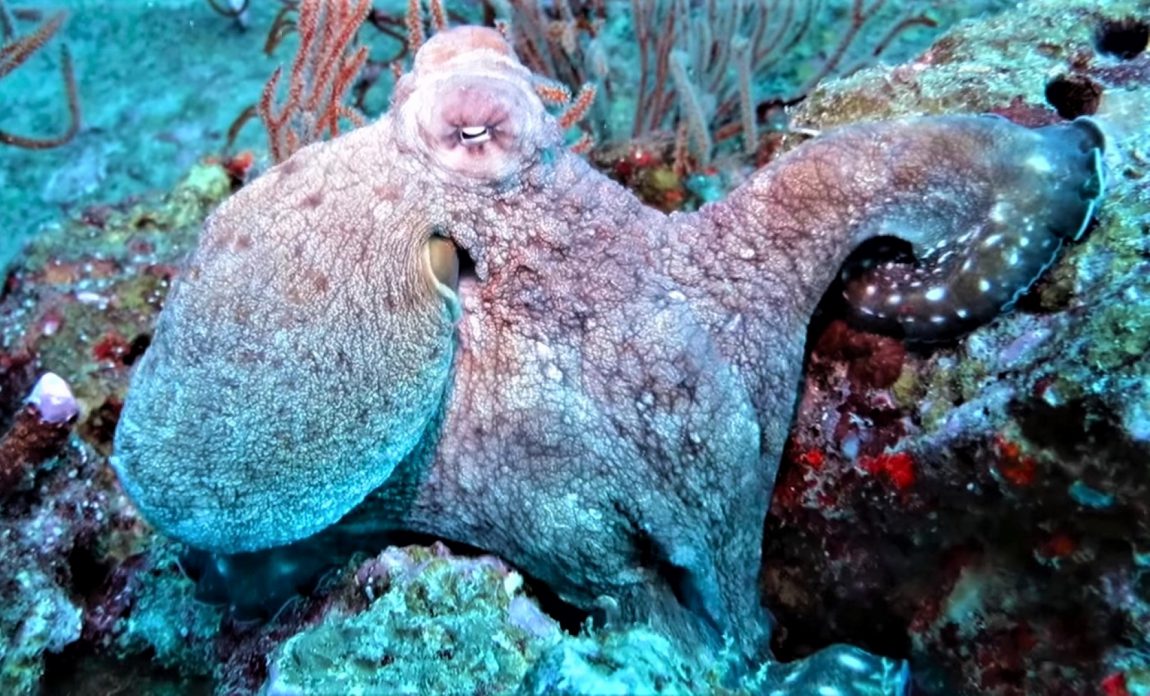
The Phi Phi Islands lies within the famous ‘Coral Triangle’ which is home to over 75% of all known coral species and it really is a biodiversity hotspot! That means you will see thousands of different species of coral and fish, ranging from tiny strikingly-colored nudibranchs (1cm) right up to the largest fish in the world; the whale shark (10 meters).

Koh Phi Phi is a group of 6 small Islands located in the Andaman Sea and is approx 40 km’s from the main tourist hubs of Phuket and Krabi on the Thai mainland. Phi Phi Island is easily accessible by ferry or speedboat from either Phuket or Krabi.

Phi Phi Islands Diving Season
The Koh Phi Phi scuba diving season runs all year round but the best conditions exist from February to May. The waters are at their calmest, warmest (29-30°C) and clearest during this time of year. In January and December the waters are at their coldest, around 27°C. The visibility usually ranges from 30m between January and April, down to 10m.
November to January sees prevailing northwestern winds bringing waves to the eastern shores, and cooler waters. Most diving takes place on the sheltered western side of the islands this time of year.
Late May to October brings southwestern monsoon winds and surface swells to the islands, lowering visibility by about 1/4, but it’s pretty rare that diving trips are cancelled due to bad weather. October also brings some heavy rains to the Andaman Sea.

Depth: 5 – 30m
Visibility: 10 – 30m and more
Currents: Light – medium
Surface conditions: Can be variable
Water temperature: 27 – 30°C
Experience level: Beginner – intermediate
Number of dive sites: ~15
Distance: ~45 km east of Phuket (3 hours), 30 km south west of Krabi (2½ hours)

Phi Phi Islands Dive Sites
Koh Bida Nok & Koh Bida Nai
At the Southern end of the Phi Phi Islands lie two small rocky islands, both of which provide excellent and varied diving suitable for beginners and experienced divers. There are shallow reefs and steep walls, with depths from 8-28m. Leopard sharks are often seen on these sites, usually resting in the sand, but sometimes swimming.
Colourful soft corals are mixed with hard coral reefs where moray eels and scorpionfish hide. At Koh Bida Nai there is a beautiful archway filled with tiny baitfish which leads to a shallow hard coral garden. Bida Nok has several swimthroughs of the West side where you find a complex jumble of giant boulders. Turtles are occasionally seen on this reef.
Leopard sharks are quite common in this area, especially on the eastern side of the island. Blacktip reef sharks and whitetip reef sharks have been known to make appearances in the area and be sure not to startle bamboo sharks which may be hiding under rocks or cracks.
Schools of barracuda and trevally are often sighted near the east pinnacle as are snappers, mackerel and other pelagic species. Divers may also see seasnakes, cuttlefich and Kuhl’s stingrays.

Loh Samah Bay
Loh Samah Bay is on the East of Koh Phi Phi Le and is a great shallow dive, often used for night dives. Inside the bay is an extensive hard coral garden featuring lots of anemones at depths of 2-12m, which is also ideal for snorkeling. The dive usually follows a small limestone island which lies within the bay. The steep walls of this rock are mirrored underwater, creating a perfect place for soft corals, sea whips and fan corals. On the East side is a long canyon filled with delicate marine life. Seahorses are sometimes found here.
Hin Bida
Located 6km from Koh Bida, this spot has been called “Phi Phi Shark Point” as leopard sharks are often seen here. The rock breaks the surface at low tide and drops to 18-22m, surrounded by boulders, staghorn corals and sand. Large rays are also sometimes encountered here. The soft corals at the Southern end of the site are particularly beautiful.
Maya Bay – The Beach
The famous setting for the movie The Beach can be crowded on the surface, but offers some decent diving including a large cavern. The North side of the bay has a sloping reef, some dramatic rock formations and a good chance to find a turtle. Often called “Maya Corner”, the best area is found at about 16 – 18m on the northwest point, where there is a great swim through and a steep wall. The cavern is found at the southwest point, and is one of the largest in the area. Remember not to penetrate caves without proper training and equipment.

.
MicDiver©